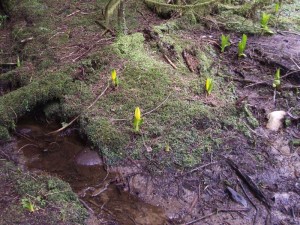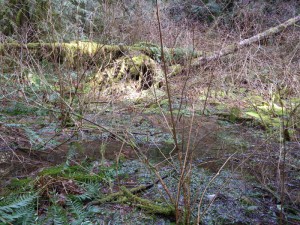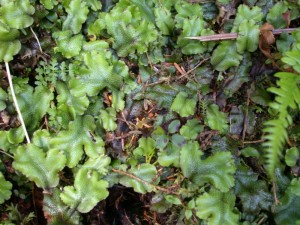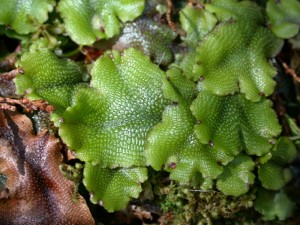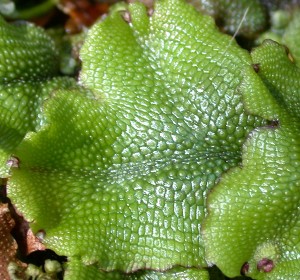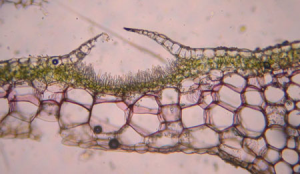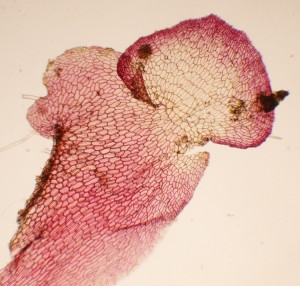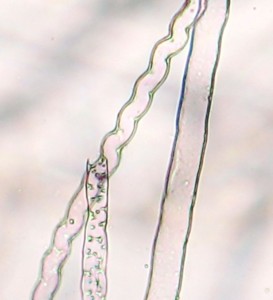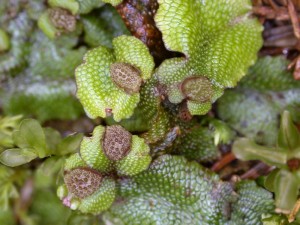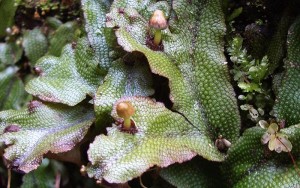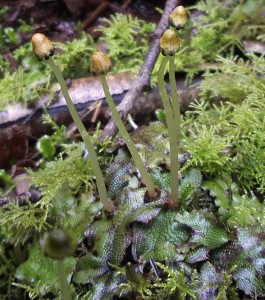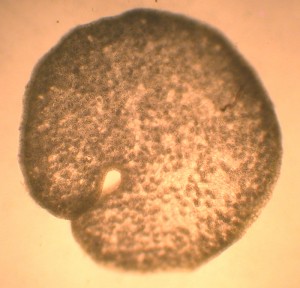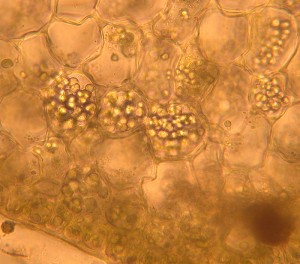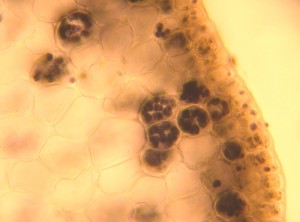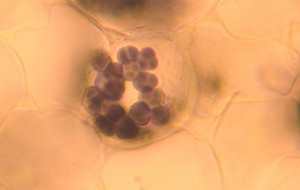Habitat
This picture is from Lynn Canyon. It is an excellent site to see Conocephalum salebrosum.
Conocephalum salebrosum is found in open areas of woodlands on wet cliffs, behind waterfalls, damp depressions, sandy banks, wet rocks, and moist inorganic soils.
Gametophyte
Overall Structure:
The thallus is usually large, light green, and irregularly branched.
Thallus:
The dorsal-side of the thallus has hexagonal surfaces that outline the air chambers. In the center of each hexagon is a white-ringed pore.
The pores are simple.
There is occassoinally one complex oil body per cell. In some cells there are elongate pits.
“Buds” are an overwintering stage. They develop new thalli. They are sheathed by ventral scales (seen here at the apices of the thalli).
Rhizoids:
White rhizoids and purple scales are located on the ventral central line of the thallus. Here is a photo of a scale.
There are two types of rhizoids, pegged and smooth.
Male Gametophyte:
There is an antheridial pad enclosing antheridia. The antheridial pads are the dark and oval regions on the thallus.
Female Gametophyte:
The archegonia are elevated by an archegoniophore. Archegonial position is anacrogynous and archegonia are enclosed.
Asexual Reproduction
Gemmae are on the lowermost layers of the thallus and are released as the thallus degrades.
Sporophyte
The name Conocephalum salebrosum refers to the cone-shaped receptacles that bear sporangia (archegoniophore).
The archegoniophores elevate through the growth of gametophytic stalks.
Sporangium:
The sporangial jacket is unistratose. A massive seta extends the sporangium downward, just enough for the sporangium to efficiently disperse spores.
Spores are multicellular at maturity and intermixed with elaters.
The cross-section of the stalk of the archegoniophore:
The cells of the stalk of the archegoniophore contain lots of starch grains.
This section was stained with IKI which stains starch purple-black.

